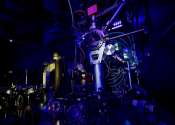A 'volcano-type' relationship: Research reveals novel correlation between metal loading and acidic oxygen evolution
In a study published in ACS Catalysis, a research team led by Prof. Yan Wensheng from the University of Science and Technology of China (USTC) has revealed the "volcano-type" relationship between metal loading and acidic ...









